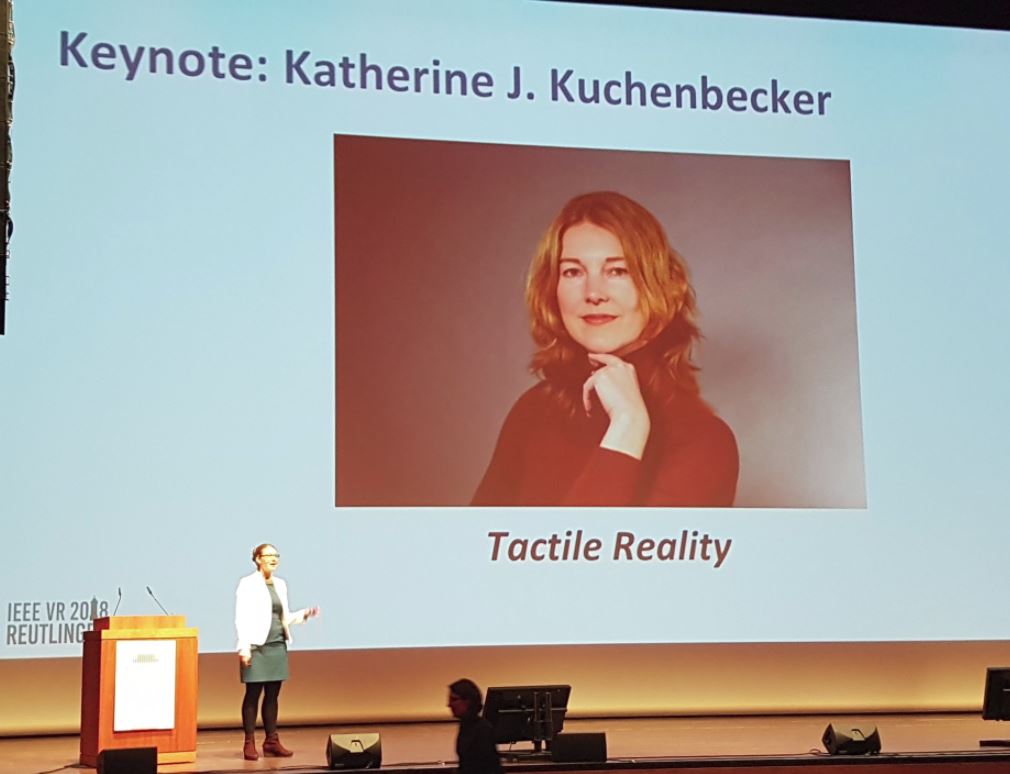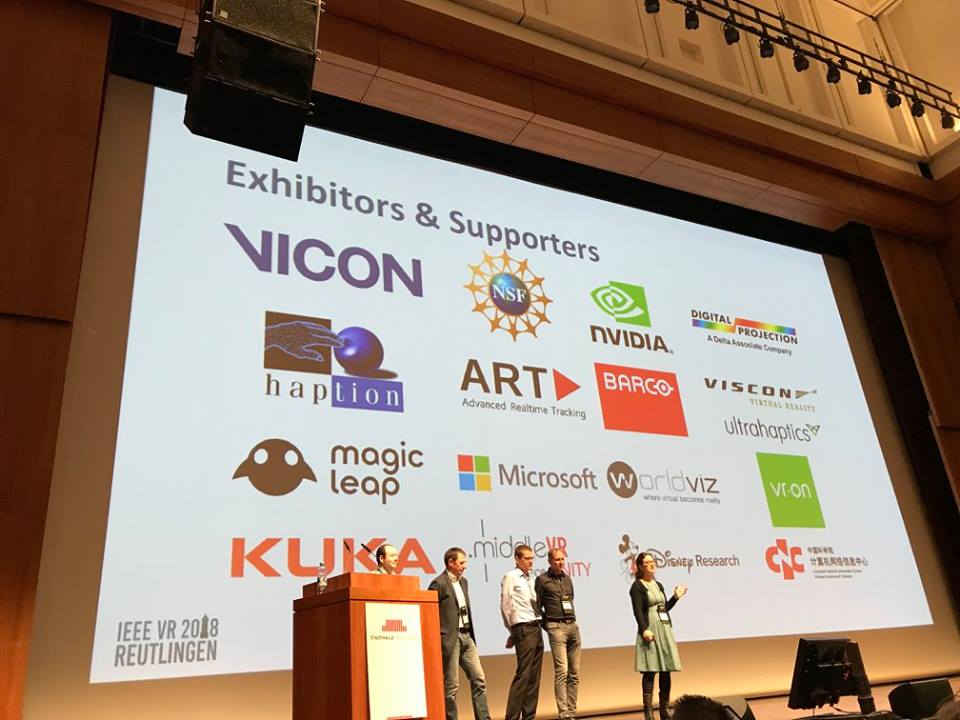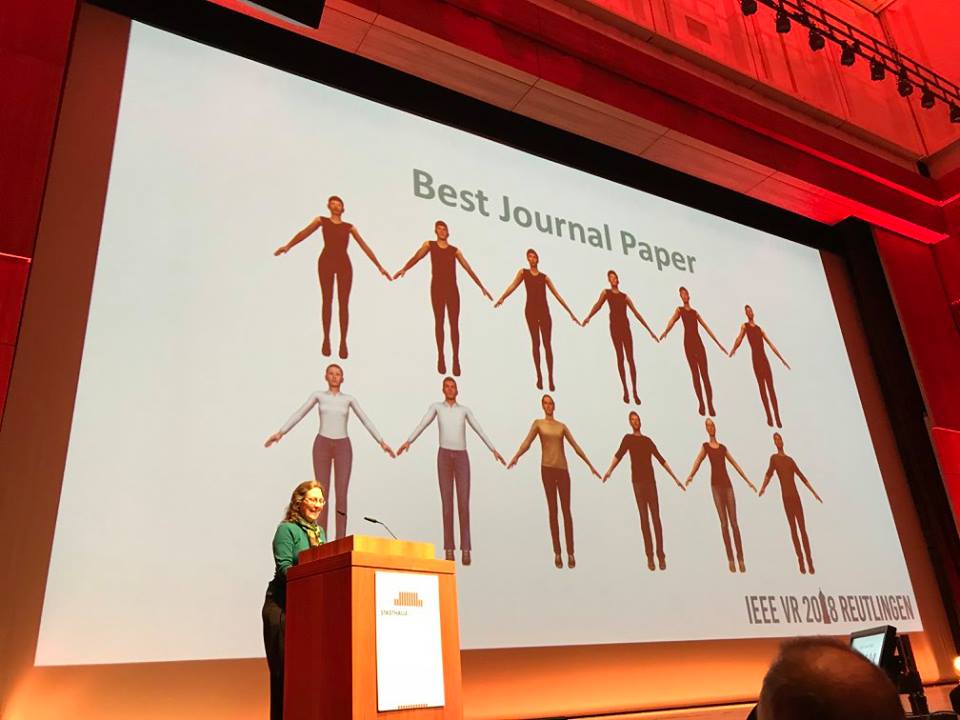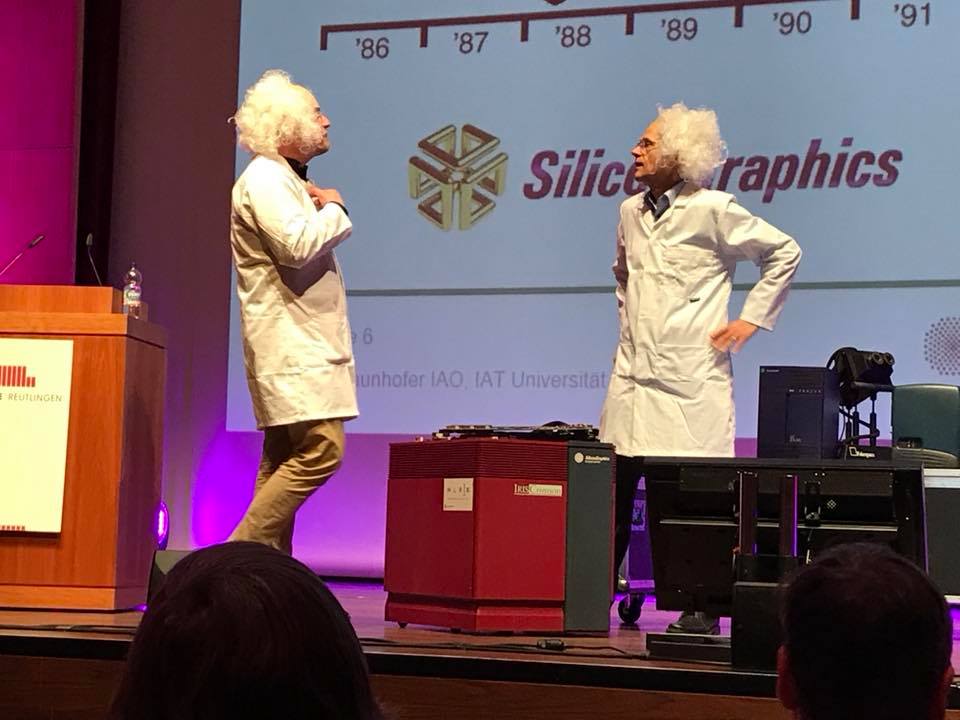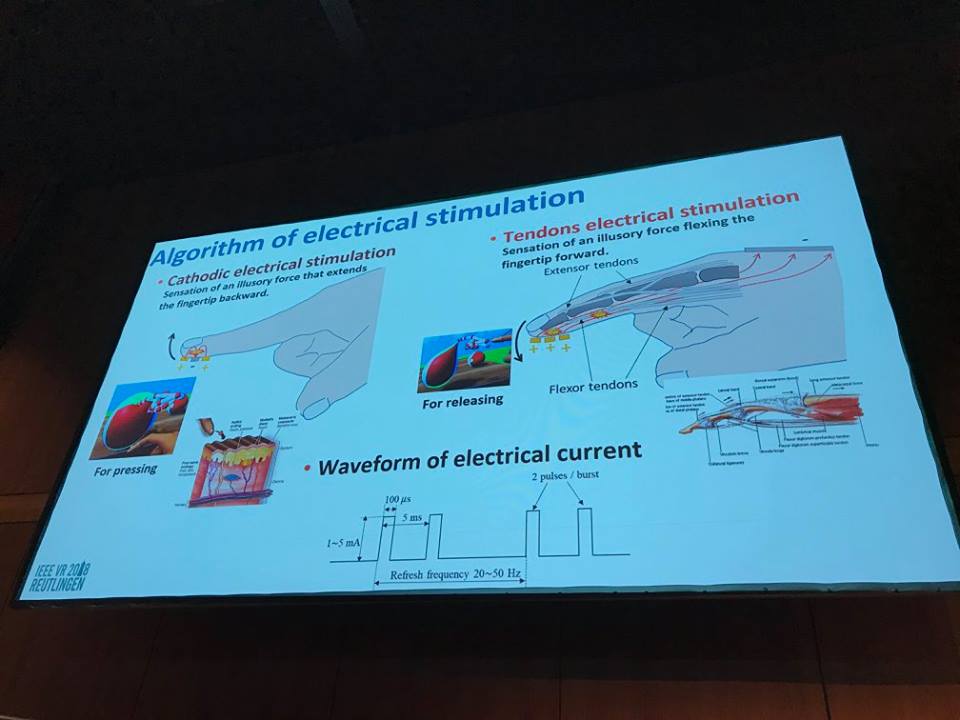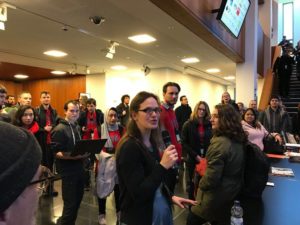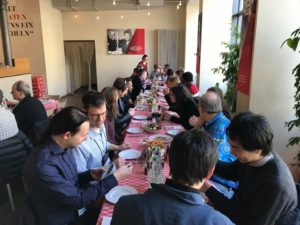By Lori Cameron and Michael Martinez
The IEEE Virtual Reality 2018 conference held at the Stadthalle Reutlingen in Reutlingen, Germany, saw record-breaking attendance this week, topping last year’s record when the conference was held in the Los Angeles area. With over 200 local German attendees, the conference attracted about 600 attendees—as well as 100 exhibitors, student volunteers and committee members—for more than 700 total.
Even German TV Tagesschau covered the IEEE VR 2018 conference. They also interviewed Betty Mohler of an institute that’s part of the Max Planck Society who offered her comments about the conference.
Even if you don’t understand German, the video gives you a vicarious experience of the VR and 3D interfaces shown at IEEE VR 2018.
View German TV news segment of IEEE Virtual Reality 2018 Conference
In addition to paper presentations and workshops, another big attraction were the virtual reality demonstrations by developers and vendors.
Here’s to the fun and awe of virtual reality and 3D interface tech. 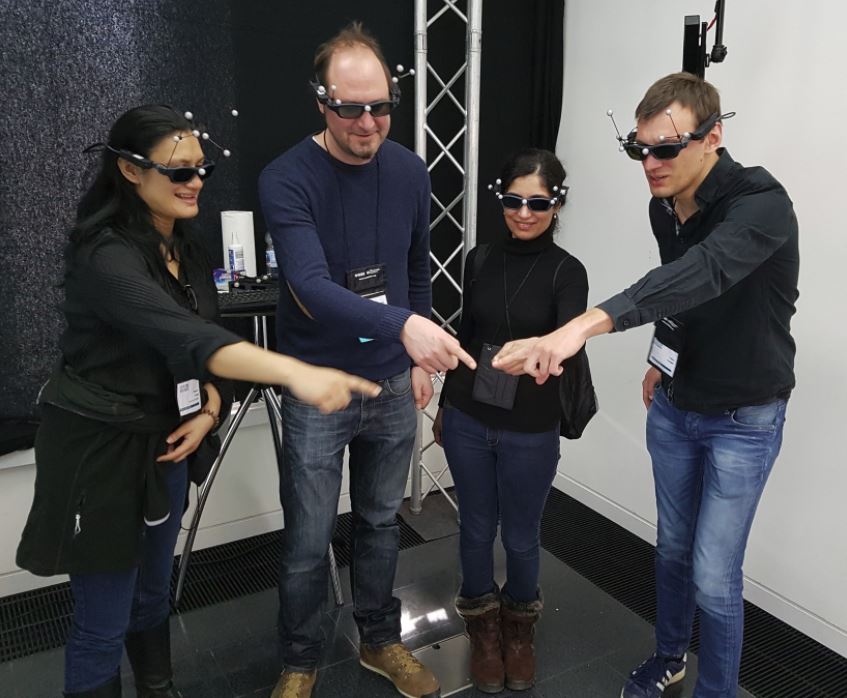 VR may look odd on the outside, but on the inside, it’s an entirely different world. “We’re actually pointing at something … not just being weird!” writes Mirabelle D’Cruz, Human Factors Research Group (HFRG) Director of European Research at the University of Nottingham. She and colleagues from Bauhaus-Universität Weimar are playing on their multi-viewer, multi-user 3D system.
VR may look odd on the outside, but on the inside, it’s an entirely different world. “We’re actually pointing at something … not just being weird!” writes Mirabelle D’Cruz, Human Factors Research Group (HFRG) Director of European Research at the University of Nottingham. She and colleagues from Bauhaus-Universität Weimar are playing on their multi-viewer, multi-user 3D system.
“Impressive VR set-up at Max Planck Institute Tübingen,” writes Assistant Professor Zerrin Yumak of The Netherlands’ Utretch University.
Katherine J. Kuchenbecker, Director of Haptic Intelligence Department at the Max Planck Institute for Intelligent Systems in Stuttgart, Germany, gives a keynote address about tactile reality.
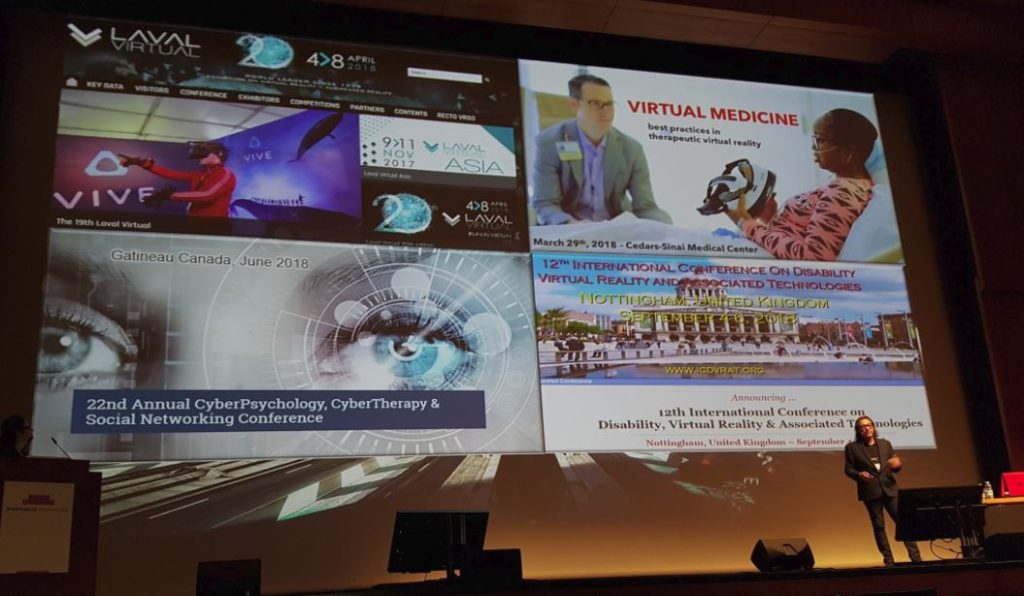 Albert “Skip” Rizzo, Director of Medical Virtual Reality – Institute for Creative Technologies – at the University of Southern California, gives another keynote address. “Is Clinical Virtual Reality Ready for Primetime?” was the topic of his address.
Albert “Skip” Rizzo, Director of Medical Virtual Reality – Institute for Creative Technologies – at the University of Southern California, gives another keynote address. “Is Clinical Virtual Reality Ready for Primetime?” was the topic of his address.
Mikel Sagardia, Alexander Martín Turrillas, and Thomas Hulin of the Institute of Robotics and Mechatronics, German Aerospace Center (DLR) present a collision avoidance framework for mechanisms with complex geometries. The performance of the framework is showcased with the haptic interface HUG.
Manuel Dudczig of VRENDEX presents the 360° video, which was created for Lichtliebe, a lighting design company, by illustrating lamp prototypes in an architectural setting to experience their influence and ambiance.
A visual of all the big names in entertainment and virtual reality research who were exhibitors and supporters at the IEEE VR 2018 conference.
Thomas Waltemate, Dominik Gall, Daniel Roth, Mario Botsch, and Marc Erich Latoschik win Best Journal Paper for their presentation “The impact of avatar personalization and immersion on virtual body ownership, presence, and emotional response.”
Oliver Riedel and Matthias Bues channel Einstein as they present the pioneers, enablers, applications, and “vintage metal” throughout the past 25 years of virtual reality development in industry.
Researchers present a 3D virtual reality system combined with finger-motion capture and electrical stimulation devices for inducing force sensation in the fingertip. These haptics can make the sensation of picking up and releasing objects in a virtual environment very realistic.
German newspapers also covered the virtual reality conference.
Conference attendees eat, drink, socialize, and sing!
Explore the IEEE Computer Society’s conference calendar here.
